Business
Biden Admin Spent A Trillion Taxpayer Dollars To Embed DEI Across Government, Study Says
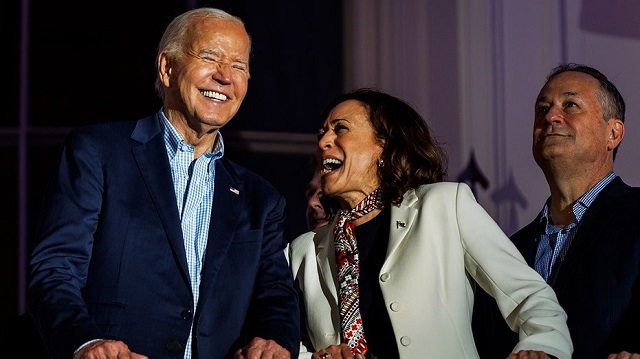
Digging for DEI Dollars: Watchdog Report Identifies 460 Programs Across 24 Federal Agencies
The Functional Government Initiative and the Center for Renewing America identify at least a trillion dollars’ worth of divisive, identity-based programs and policies among the federal thicket and make suggestions that could ensure they don’t come back.
On his first day back in office, President Trump issued an executive order to eliminate “radical and wasteful” Diversity, Equity, and Inclusion (DEI) “programs and preferences” from the federal government. The Biden administration embraced this “woke” agenda and embedded it across the executive branch. Ensuring these programs do not make a comeback will take a sustained effort.
To help the administration in this task, and to help educate the public on the scope of the problem, the Functional Government Initiative (FGI) and the Center for Renewing America (CRA) have published DEI Spending in the Biden Administration. This report traces the Biden administration’s web of DEI programs and influence throughout the government, provides numbers on how much money these programs and initiatives wasted, and offers options for Congress to consider that could root out DEI ideology permanently.
A crucial guide to uncovering the myriad DEI expenditures, both small and large, were the “Equity Action Plans” (EAPs) that President Biden demanded across the government. The Biden administration claimed that these plans were designed to identify and remove barriers keeping federal resources from “marginalized” or “underserved” communities, particularly in areas like procurement, contracting, and grant opportunities. In reality, the systemic focus on DEI poisoned federal governance, contributing to the substantial increase in related spending and diverting resources toward controversial policies, away from agency missions. The Biden administration forcibly inserted the language of DEI into every corner of the executive branch.
The study identified 460 programs across 24 government agencies that diverted resources to DEI initiatives. At least $1 trillion was infused with DEI principles. Here are some examples taken from various EAPs:
- The Defense Department planned to “Integrate environmental/economic justice tools.”
- FEMA found the need to “Install equity as a foundation of emergency management.”
- The Department of Labor “must embed equity in a sustainable manner that recognizes the multiple and overlapping identities held by workers.”
President Trump’s swift actions and executive orders stopped these efforts. To ensure a future president can’t just reverse course upon taking office, Congressional action could banish DEI philosophies for good. Our report includes suggestions for lawmakers to consider for eliminating DEI and other radical ideologies—detailed legislative proposals that could prevent the resurrection of poisonous ideas and practices in our national government.
Wade Miller, Senior Advisor for CRA, issued the following statement:
“DEI is deeply rooted throughout all aspects of the federal government, and it needs to be eliminated completely. Thankfully, the Trump administration has already embarked on a vitally necessary complete audit of each and every government program. We offer, in this report, what we hope are additional resources and tools that the new administration and Congress can use to identify, destroy, and permanently remove DEI from the federal government.”
Roderick Law, spokesman for FGI, issued the following statement:
“The dual study could both expedite the elimination of DEI from the executive branch and show just how quickly pernicious ideologies can spread inside the government. The nature of DEI is both divisive and anti-American, so why force it onto the military, the Commerce Department, or the EPA? After President Biden lavishly funded and pushed these controversial principles into every possible area of government, our hope is that raising these questions and offering Congress and responsible executive branch officials tools and suggestions can keep it from happening again.”
Business
Carney should rethink ‘carbon capture’ climate cure
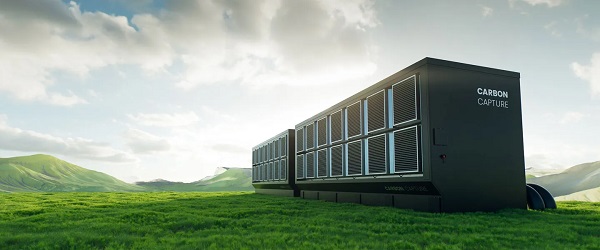
From the Fraser Institute
In case you missed it amid the din of Trump’s trade war, Prime Minister Carney is a big believer in “carbon capture and storage.” And his energy minister, Tim Hodgson, who said it’s “critical to build carbon capture systems for the oilsands,” wants the Smith government and oilsands companies to get behind a proposed project (which hasn’t been unable to raise sufficient private investment) in Cold Lake, Alberta.
The term “carbon capture and storage” (or CCS) essentially refers to technology that separates carbon dioxide (CO2) from emissions and either stores it or uses it for other products. Proponents claim that CCS could replace other more ham-handed climate regulations such as carbon taxes, emission caps, etc. The problem is, like many (or most) proposed climate panaceas, CCS is oversold. While it’s a real technology currently in use around the world (primarily to produce more oil and gas from depleting reservoirs), jurisdictions will likely be unable to affordably scale up CCS enough to capture and store enough greenhouse gas to meaningfully reduce the risks of predicted climate change.
Why? Because while you get energy out of converting methane (natural gas) to CO2 by burning it in a power plant to generate electricity, you have to put quite a lot of energy into the process if you want to capture, compress, transport and store the attendant CO2 emissions. Again, carbon capture can be profitable (on net) for use in producing more oil and gas from depleting reservoirs, and it has a long and respected role in oil and gas production, but it’s unclear that the technology has utility outside of private for-profit use.
And in fact, according to the International Institute for Sustainable Development (IISD), most CCS happening in Canada is less about storing carbon to avert climate change and more about stimulating oil production from existing operations. While there are “seven CCS projects currently operating in Canada, mostly in the oil and gas sector, capturing about 0.5% of national emissions,” CCS in oil and gas production does not address emissions from “downstream uses of those fuels” and will, perversely, lead to more CO2 emissions on net. The IISD also notes that CCS is expensive, costing up to C$200 per tonne for current projects. (For reference, today’s government-set minimum carbon market price to emit a tonne of CO2 emissions is C$95.) IISD concludes CCS is “energy intensive, slow to implement, and unproven at scale, making it a poor strategy for decarbonizing oil and gas production.”
Another article in Scientific American observes that industrial carbon capture projects are “too small to matter” and that “today’s largest carbon capture projects only remove a few seconds’ worth of our yearly greenhouse gas emissions” and that this is “costing thousands of dollars for every ton of CO2 removed.” And as a way to capture massive volumes of CO2 (from industrial emission streams of out the air) and sequestering it to forestall atmospheric warming (climate change), the prospects are not good. Perhaps this is why the article’s author characterizes CCS as a “figleaf” for the fossil fuel industry (and now, apparently, the Carney government) to pretend they are reducing GHG emissions.
Prime Minister Carney should sharpen his thinking on CCS. While real and profitable when used in oil and gas production, it’s unlikely to be useful in combatting climate change. Best to avoid yet another costly climate change “solution” that is overpromised, overpriced and has historically underperformed.
Alberta
World’s first direct air capture test centre to open doors in Innisfail

From the Canadian Energy Centre
Deep Sky Alpha facility will trial technologies that suck CO2 from the sky
Innisfail, Alta. is set to host the world’s first test centre for technology that removes carbon dioxide directly from the air to fight climate change.
This June, Montreal-based Deep Sky completed construction of a $110-million carbon removal innovation and commercialization centre in the town about 120 kilometres north of Calgary.
It is a key piece of the company’s vision to build 100 large-scale facilities across Canada and become a pioneer in the emerging market for direct air capture (DAC) technology.
“As of this summer, we will begin not only carbon removal, which is actually sucking it out of the air through these very powerful fans, but also liquefying it and then putting it underground for storage,” Deep Sky CEO Alex Petre told CTV News.
Work began in August 2024 on the project known as Deep Sky Alpha, which aims to begin testing up to 10 different DAC technologies in real-world conditions. It is expected to be up and running this August.
The Government of Alberta is investing $5 million in the facility through Emissions Reduction Alberta.
Deep Sky’s facility will capture up to 3,000 tons of CO2 per year over the next 10 years, with room for future expansion.
Captured CO2 will be transported by tanker trucks about 200 kilometres north to Sturgeon County where it will be injected more than two kilometres below the surface into the Meadowbrook Carbon Storage Hub.
Operated by Bison Low Carbon Ventures, the project is the first approved under Alberta’s open-access carbon sequestration hub initiative and is expected to begin operations before year-end.
“We’re going to line up these eight units side by side and run them to see how they operate in the summer and in the cold of winter,” said Damien Steel, former Deep Sky CEO who continues to serve as a company advisor.
“We’ll be tracking everything to see how all these best-in-class technologies compare – what are their strengths and weaknesses – so that ultimately we can choose the best solutions to scale up for the major commercialization of carbon removal projects that are needed.”
Unlike typical carbon capture and storage (CCS) projects that scrub CO2 from the exhaust of heavy industrial facilities such as power plants, refineries, cement plants or steel mills, DAC utilizes different technology to remove much lower concentrations of CO2 directly from the atmosphere.
According to the International Energy Agency (IEA), there are 27 DAC plants operating worldwide, capturing almost 10,000 tonnes of CO2 per year. In order to reach net zero emissions by 2050, the IEA estimates DAC capacity must expand to more than 60 million tonnes per year by 2030.
Deep Sky selected Alberta for its test facility because of the province’s experience with CCS, including its advanced regulatory system for CO2 sequestration.
“To be successful at carbon removal you need three things: you need access to geologic storage, you need talent, and you need a reliable supply of renewable power to operate DAC facilities. Canada is blessed with these things, and Alberta especially has all of these attributes in spades,” Steel said.
Deep Sky Alpha is one of several clean tech projects underway in a five-acre industrial park in Innisfail as part of an economic diversification plan that was launched in 2022 to make the town a centre for energy innovation.
A municipal solar farm and a power plant that burns garbage and will be equipped with CCS to eliminate emissions are also under development.
Deep Sky says that more than 110 jobs were created during the construction phase of its Innisfail project and it will employ 15 people for annual operations.
Subsequent commercial plants it hopes to build across Canada will employ approximately 1,000 workers for construction and 150 for annual operations.
Steel said he expects the DAC test facility will become a destination for those looking to advance CCS projects around the world, showcasing Canadian expertise in the process.
“My hope is that not only will we learn and improve carbon removal technology, but we will also put Canada on the map in terms of being a place where innovation can thrive and this industry can work,” he said.
“It will be a place where corporate leaders, government officials and customers from around the world can come and see what direct air capture really is, how it works, and how Canada is the place to do it.”
-

 Education1 day ago
Education1 day agoWhy more parents are turning to Christian schools
-
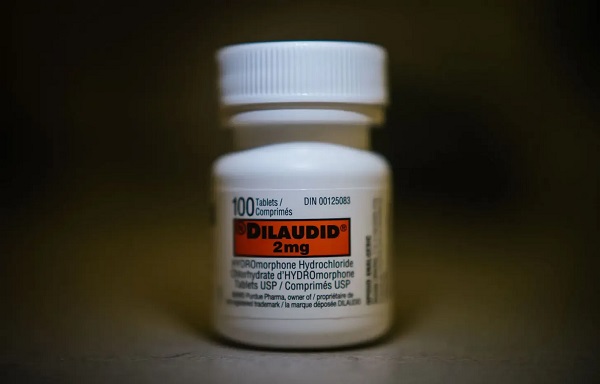
 Addictions2 days ago
Addictions2 days agoAfter eight years, Canada still lacks long-term data on safer supply
-

 Alberta1 day ago
Alberta1 day agoOPEC+ is playing a dangerous game with oil
-
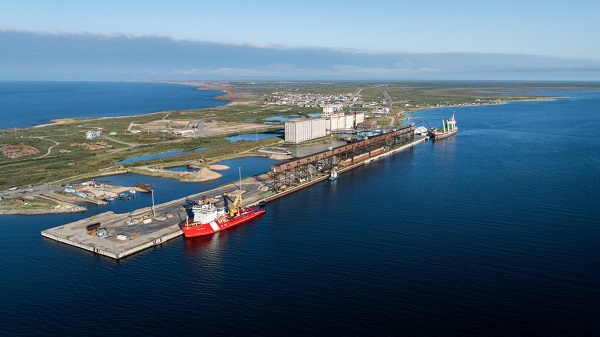
 Alberta1 day ago
Alberta1 day agoUpgrades at Port of Churchill spark ambitions for nation-building Arctic exports
-

 Business1 day ago
Business1 day agoIs dirty Chinese money undermining Canada’s Arctic?
-
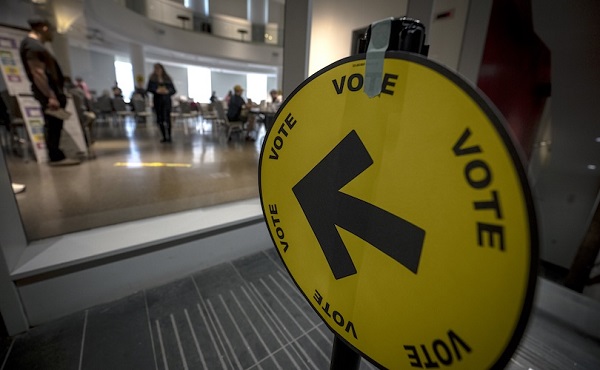
 National2 days ago
National2 days agoLiberals push to lower voting age to 16 in federal elections
-

 COVID-191 day ago
COVID-191 day agoJapan disposes $1.6 billion worth of COVID drugs nobody used
-

 conflict1 day ago
conflict1 day agoOne of the world’s oldest Christian Communities is dying in Syria. Will the West stay silent?







